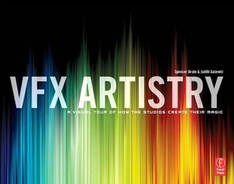DIGITALKITCHEN
ARTIST INSIGHT: JUST BECAUSE YOU CAN DOESN’T MEAN YOU SHOULD: CAMPING IN THE UNCANNY VALLEY WITH JAR JAR BINKS
Visual effects, circa 2008. Take a quick moment to stand up, stretch, and ask yourself, is it everything it promised you it would be?
Like a shimmering black Hummer with mud flaps reading “Back Off,” the greater VFX industry still maneuvers astonishingly well, chasing down and often catching (in fleeting two-hour spells) an insatiable audience appetite for a faster, louder, deeper, more visceral experience. But as the challenge of fooling the eye becomes ubiquitous and expected, the overdue discourse between the science of what can be done and the art of what should be done will be forced to take place within the industry.
We only ask one thing of the realm of VFX: to transport us. Truly moving visual effects find their power by honoring the existing, diverse psychologies of the viewer. Effects work that opts for emotional connection and service to story retains significance well after the technique, science, and execution grow repeated, dated, or even obsolete. The distinction is as important as the difference between a homemade dinner and a plastic facsimile in the microwave. Spielberg accidentally–intentionally discovered this subtle, powerful difference with Jaws. A mechanical shark was not fully functional when shooting began. Most of the film shoot transpired shark-free, but audience fear is only magnified thanks to the glitch. Spielberg instead shot from the point of view of the shark. This serendipitous difficulty created a film that played not on our fear of sharks, but on our fear of being help less in the water. We as an audience brought the most immensely powerful visual effect with us: our own psyche.
It seems that some work, several decades old, holds such strong relevance, while other pieces, shortly after their completion, are relegated to an uncanny valley floor of unwatchable, toy-like trivia. This valley is littered with artwork that banked on the effect as the story. VFX work that remains loyal, obedient, and conforming to the story maintains a remarkable level of transportive power, even if the execution itself runs past its expiration date.
Today’s logistical, high-render workflows make it all but impossible for filmmakers to create, re-assess, and create again. Green motion-capture sets and actors crying to tennis ball tracking markers leave little room for the serendipity, failure, and flaw that filmmakers often cite as the saving grace of the finished work.
The idea that VFX as a craft can execute in a style that moves with and toward audiences with accessible flaws is more the exception than the rule. As filmmakers, we would do well to let our audiences in on our joke occasionally. The do-it-yourself VFX work of Michel Gondry connects to its audience by exposing and celebrating the hand of the filmmaker. Older, analog techniques, including stop motion animation, continue their resurgence. Nonetheless, much of the contemporary VFX industry seems content to expand the distance between maker and viewer, establishing bragging rights via a “you could never do this” philosophy.
Take, for instance, the notion of the “uncanny valley,” the idea that human characteristics are perceived in forms that are very non-human, generating great empathy. Meanwhile, “almost human” forms stand out. Viewers’ negative reactions range from distanced to repulsed. Beleaguered audience reactions to the Beowulf and The Polar Express characters are cited as being caused by the uncanny valley. Surely there are countless other as-yet-undiscovered valleys in the vast VFX mountain range.
It sounds like Jungian gibberish, but consider audience psyche as part of the equation for success—or even most of the equation for success. A truly “affective effect” does not assume that all viewers are transported to the same place in the same way. Working away from spoon-feeding FX imagery to audiences goes a long way in allowing audience participation in the story(Alien, Cloverfield, Jaws). The heart of the viewer, the history that viewers bring to the table, should take a higher priority in the art of visual storytelling.
The moment Jar Jar uttered his first line, so began the desecration of audience psychological participation. No longer could we absorb Jar Jar with our own informed history, for he is so over-characterized that there is no room for interpretation. We were gifted with a coloring book that had already been filled in. Take Chewbacca, on the other hand. Now there was a character. He was not only wildly accessible from a filmmaking perspective (put an actorina fur suit), bu the set off tiny sparks of emotional access, like our first family dog, our childhood teddy bear, and our instinctive desire to connect with something that cannot speak to us in words. That puppy-like throttle-mourn that emanates when Chewy learns of his best friend’s demise? Wait, stop … apple in the throat just thinking about it.
So, will audiences continue to regard execution as the pre-eminent aspect of visual effects work? Does reliance on the power of VFX dull or delude our emphasis on storytelling? The craft of VFX has its best days ahead. There is a wealth of untapped power waiting in the form of personal memory, psychology, and tangible connection to the image on the screen, and the real magic lies in our ability as viewers to bring our own experiences into the story. Here’s to the expectation that we as audiences will begin to scrutinize and question visual works that play stand-in for story and experience. Our imaginations are not seeking a surrogate. We’re still hungry, but not for more rations of empty-calorie, over-rendered fare. We’ll settle most days for the beautiful flaw of a Wookie suit and a chipped platter of mom’s macaroni and cheese. It just tastes better.
